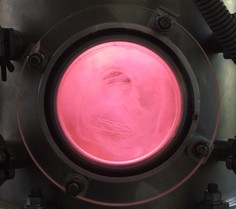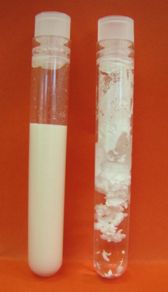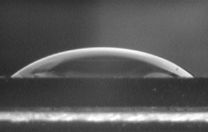
SurfaceTreat
PLASMA – green technology of surface treatment
Plasma technology for surface treatment
Plasma surface treatment performs the solution of the interfacial properties supervision. This type of technology fulfills not only economical and quality requirements, but also it is environmentally friendly solution. Plasma technology brings even more significant benefits such as:
- high added value
- low running costs
- process without surface mechanical interference
- minimum heat interference of the surface
- highly efficient process
- process without surface geometry limitation
- high modification effect stability -powder materials – reduction of about 20 % during 3 years of storage under standard conditions (in some cases)
- process without altering the bulk material

Currently used methods of powder surface treatment are based on heat activation of the particle surface in ovens (furnaces) or by direct flaming. Both methods are significantly limited for polymers because of the heat degradation of the modified material. Therefore the cold plasma discharge processes are used in this field.
The plasma discharges are also used for surface cleaning. Contamination like oil, grease, fatty acids, dust or bacteria can be removed. The surface is cleaned by impinging active ions and then separated contamination is sucked off. It is used mainly prior to bonding or final treatment such as lacquering, printing etc.
Our technology
We use patented equipment for low-pressure plasma treatment. The equipment allows:
- powder or granules surface modification
- foils or plastic parts surface modification
- plasma cleaning of small components or microsurfaces
The merits of the equipment:
- maximum contact area of the treated material with plasma(all particle surfaces are treated while they are stirred
- process variability (process gas, pressure, time) depending on the type of modification and type of the material
- wide range of the processed material (granules mm in diam, powder in µm in diam)
Effect of plasma surface treatment
The plasma processes are based on creation of active particles (ions, exited atoms, radicals, etc.) by the working gas going through plasma discharge. These particles are for example able to create layers, cause chemical reactions or to be active participants of such reactions.
Concerning our processes active particles of working gas created in the plasma discharge cause reaction on the polymer surface, when new functional groups are bound on the polymeric chain. These are mostly OH groups. Chemical structure of the particle surface is changed from non-polar to polar and hydrophobic material becomes hydrophilic. As the effect is required change of surface energy resulting in higher wettability and very good dispersion capability and/or enhancement of adhesion properties of the polymer towards to other materials.
Final effect – wettability of untreated and plasma treated powder in distillated water

Left – Plasma treated PE powder
Right – Untreated PE powder
Reaction of distillated water drop on the surface sintered from untreated powder (on the left) and on the surface sintered from plasma treated powder (on the right).


Proudly created by Meatballs, s.r.o., 2017